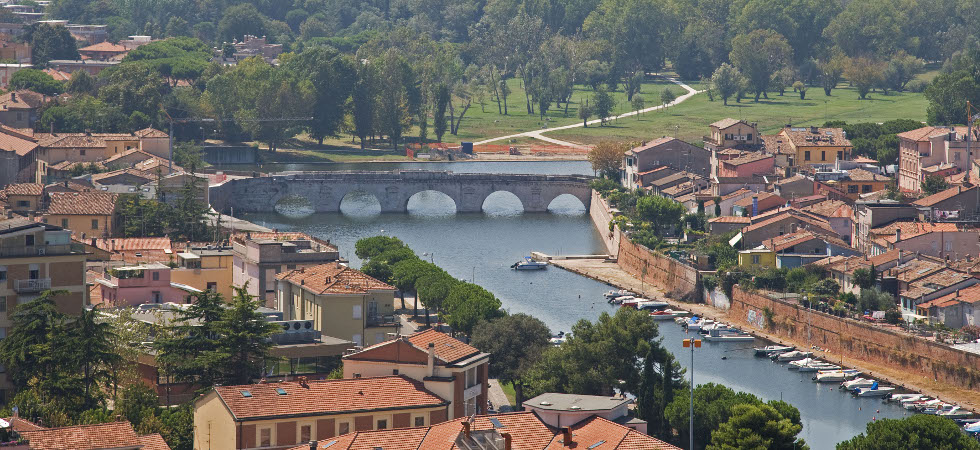For those considering a weekend break and perhaps hoping to rekindle an air of romance, Rimini, located in Italy’s Emilia-Romagna region, beside the glittering waters of the Adriatic Sea, offers visitors a tantalising glimpse into its colourful kaleidoscope of history and culture and a taste of that all consuming and infectious Italian passion for life, which emanates from all corners of this enchanting city.
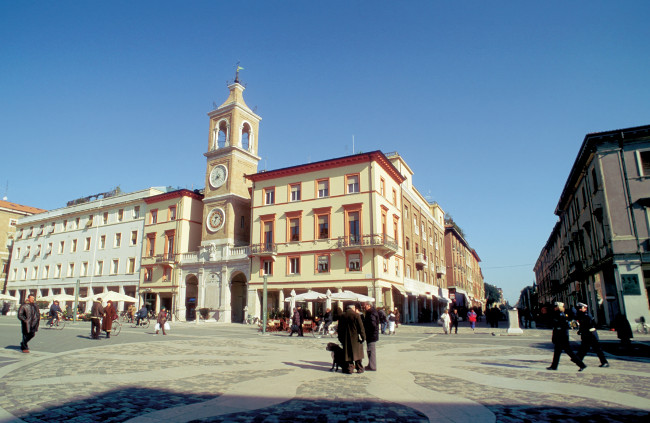
Founded by the Romans in 268 BC, Rimini was recognised as an area of strategic importance and three major Roman roads were duly constructed; the Via Flaminia, the Via Popilian, and the Via Aemilian, and the city rapidly became an important communications hub between the north and south of the peninsula. Monuments celebrating several Roman emperors remain in situ today and include the magnificent Augustus Arch, which features sculptures of Apollo, Neptune and Jupiter. Commissioned in 27BC by the Roman Senate, the arch was built to honour the Emperor Augustus, who founded the Roman Principate and controlled the Roman Empire from 27 BC until his death. The imposing monument, which originally stood at the end of Via Flaminia, was relocated to its present site on Corso d’Augusto and in 1935 a decree was passed to enhance its stature and all the buildings around it were swiftly demolished. Today the arch is one of the symbols of Rimini and is featured prominently on the city’s coat of arms.
A leisurely stroll along the Corso d’Augusto, leads onto a piazza, which was once named after Julius Caesar, who, it is said, gathered his troops there in 49BC. The piazza is now named Tre Martiri in honour of three brave partisans, Luigi Nicolò, Adelio Pagliarini and Mario Capelli, who were tried by a German court for stockpiling weapons and ammunition and subsequently hanged in the square in August 1944. The exact place of the execution is marked on the square and serves as a constant reminder of those who gave their lives for the benefit of all.
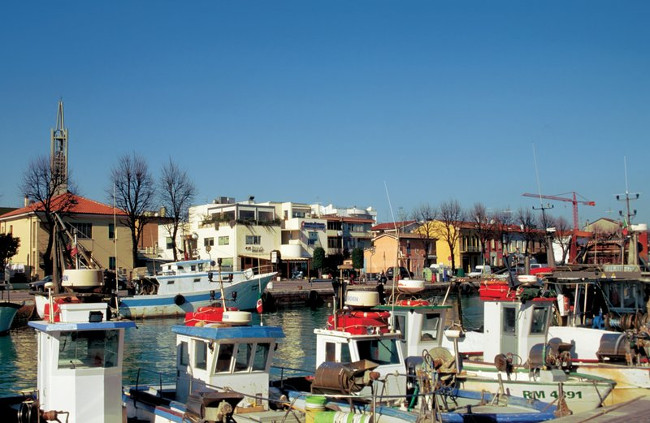
Admirers of Romanesque architecture will be enchanted by the impressive façade of the Malatestiano Temple, located on Via IV November. The cathedral, built in the 13th century and reconstructed in 1450, features a wide marble façade, adorned with sculptures inspired by the Arch of Augustus, and the interior of the building has seven chapels containing the remains of notable citizens of Rimini including Georgius Gemistus, the Greek scholar of Neoplatonic philosophy responsible for the revival of Greek learning in Western Europe.
The Domus of Rimini (the surgeon’s house) is another major attraction for visitors. Discovered in 1989, this archaeological area covers more than seven hundred square metres and is located on Piazza Ferrari. Presented to the city, following eighteen years of excavation, great archaeological finds were unearthed on the site and it provides an intriguing insight into the past. The Domus of Rimini was a two storey residential building dating back to the Roman period during the 2nd century AD. Located directly on the seafront, which, during that time, was more than one kilometre inland, the house stands on a stone base with walls that were made of baked clay and it contained a dining room, bedroom, living room and a medical room where the resident surgeon would operate on his patients. This room featured a well preserved colourful and finely decorated mosaic of Orpheus surrounded by animals in a forest, and an inscription, discovered on a wall, reads ‘Eutyches (the surgeon’s name) homo bonus’, which provided the means to identify the owner of the property. It is thought that Eutyches was a military surgeon due to the significant number of surgical instruments discovered on site. The collection, which is on display in the adjacent City Museum, includes a very rare ‘Diocle’s spoon’, used to extract arrow heads from the body. The resident surgeon of the Domus of Rimini was clearly a cultured and extremely wealthy man who loved to be surrounded by art and antiques and the finer things in life.
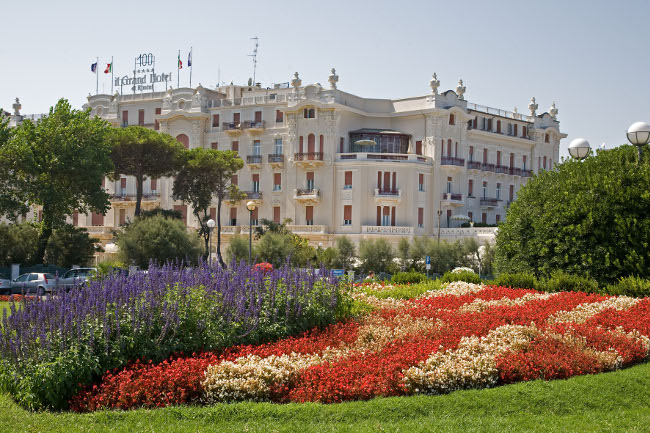
For those seeking similar accommodation with the highest levels of comfort and service and exceptional style, the Grand Hotel, which features a Liberty style pink façade, was declared a protected national monument in 1994, and it is the best place to stay. Built in 1908 and located in the heart of a lush and verdant park covering 4000 square metres, this property oozes with elegance and is also set right on the seafront in Marina Centro. Amenities include two swimming pools, a private beach, sports facilities, a spa and wellness centre and a private beach. Accommodations are spacious with walls adorned with works of art and tastefully furnished with original XVIII century French and Venetian antiques and the collection of original Venetian chandeliers lend a warm glow to the sumptuous décor. Other features include 18th century French parquet flooring and the comfortable beds swathed with crisp, white linens ensure a deep slumber.
The Grand Hotel was featured in several films directed by the celebrated screen writer and film director Federico Fellini, who was born in Rimini in 1920. His film Amarcord, released in 1973, featured the Grand Hotel as a backdrop in a number of scenes and he became a regular guest. His career spanned almost five decades and he was nominated for twelve Academy Awards, received four Oscars in the ‘best foreign film’ category and was awarded the Palme d’Or for his film La Dolce Vita, which was released in 1960 and remains one of the most critically acclaimed films of all time.
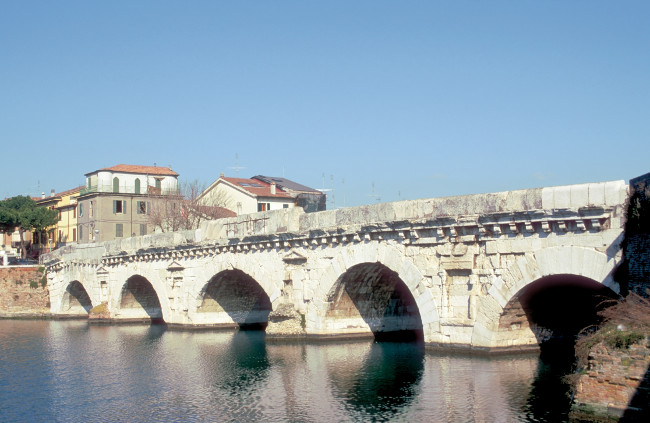
For your own personal taste of ‘the good life’ take an evening walk along to the Tiberius Bridge, which spans the Marecchia River, and marks the entrance to the Via Aemilian, Dating back to 21AD. The glorious bridge features five semi-circular arches and rests on its original foundations, which are made up of wooden stilts. Construction began during the reign of Augustus and was completed when his successor Tiberius was in power. During WWII and the fierce Battle of Rimini, the Tiberius Bridge remained intact and withstood the German army’s continuous attempts to destroy it. Today the bridge is a symbol of the city and is also featured on its coat of arms.
Borgo San Giuliano , just across the bridge, is Rimini’s most captivating area. A quaint fishing village with pretty cottages coloured in pastel hues. And for those partial to a casual and traditional dining experience, head for the Osteria de Börg, which is recommended in the 2017 Michelin Guide. Hidden away on Via Forzieri, this restaurant is popular with locals and visitors in-the-know and offers an impressive array of flavourful, slow-cooked dishes made with local ingredients and handmade pasta. Sample the delicious piandina bread, served with a generous selection of cheeses, followed by the succulent ravioli. Order a glass of Sangiovese wine and as you enjoy the delicate flavours of cherries, reflect on the words of Federico Fellini, who once said ‘There is no end, there is no beginning, there is only the passion of life’.

Top tip: Take advantage of low fares from London Gatwick to Bologna with easyjet.com (duration just over 2 hours) and then hop on the train from Bologna Centrale to Rimini (duration 52 minutes).
For more information visit trainline.eu.












